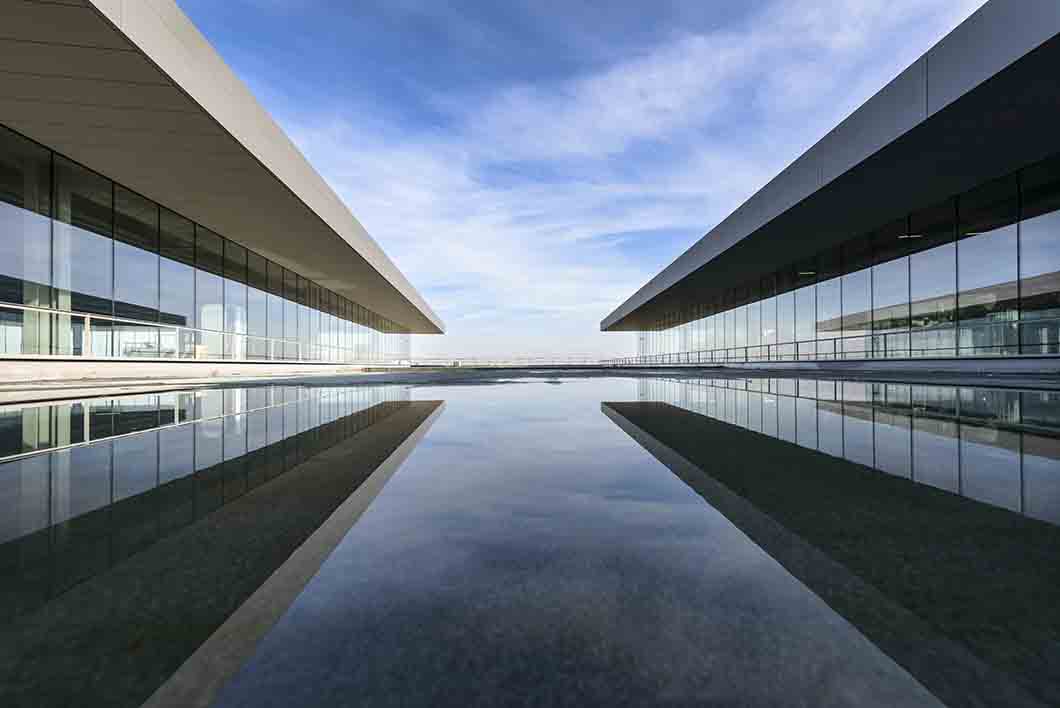A new report highlights the decarbonization progress of the global cement industry.




As world leaders debate climate action at COP28, a new Report provides an update on the global activity and progress of the world’s cement and concrete industry in meeting its Net Zero targets.
In 2021, the world’s leading producers, representing 80% of global production outside of China, became the first ‘heavy’ industry to set a clear decarbonization pathway.
They signed up for the GCCA’s Cement and Concrete Industry’s 2050 Net Zero Roadmap and committed to help limit global warming to 1.5C, in line with UN agreements.
Two years later, the action taken so far is outlined in the GCCA’s Cement Industry Net Zero Progress Report. The report highlights the leading role that companies worldwide play in decarbonizing this essential global industry.
The report discusses the developments in Carbon Capture and Storage, the increasing use of alternative energy sources, and research on new materials and technology. The report comes two years after the launch of its Concrete Future 2050 Roadmap for Net Zero Concrete.
It details the extensive work by the world’s cement and concrete industry and its leading industry body, the Global Cement and Concrete Association (GCCA), to cut CO₂ emissions.
Fernando Gonzalez, CEO of Cemex and President of the GCCA, said: “We are pleased to present this report, which captures the progress our industry is making towards net zero. But it will take the combined efforts of industry, governments and societies around the world to deliver on this commitment.”
He noted this is the decade to make full decarbonization of our industry possible.
The combined decarbonization efforts of the GCCA and its members are making a difference. Independently verified published data shows a 23% drop in CO₂ emission intensity of cement-related material compared to 1990.
Earlier this year, along with LeadIT, the GCCA launched a new Green Cement Technology Tracker to help public monitoring of decarbonization efforts across the industry by tracking the developments of carbon capture and other critical technological projects worldwide.
Among the decarbonization projects which individual GCCA member companies are working on featured in the report are:
- The development of carbon capture and storage projects. CCUS is expected to account for 36% of the industry’s global CO2 reductions, according to the GCCA Roadmap. Projects to develop CCUS plants featured in the report include Breedon in the UK, Heidelberg Materials in Germany, Holcim in Switzerland, Taiheiyo Cement in Japan, and TITAN Cement Group in Greece.
- The increasing use of alternative energy sources. Examples include more use of solar power in the USA, India and Taiwan, hydrogen at a cement plant in Honduras, and a plant in India using sustainable, cultivated bamboo.
- The development of technology and alternative materials to make low-carbon cement. These projects use less clinker – the carbon-intensive element of traditional cement production- and alternative materials like calcined clay. Examples include a project involving VDZ in Germany, which has seen the construction of a high-rise tower using low-carbon cement, and in Thailand, where SCG is involved in planning an entire low-carbon model city.
- Projects make use of non-recyclable and industrial waste as fuel for cement plants. These initiatives help reduce societal waste and support a circular economy. Examples come from Guatemala, Japan, India, and Europe, including CRH’s new co-processing facility for non-recyclable waste in Romania.
- Rehabilitation of local environments. In New Zealand, Winstone Aggregates, part of the Fletcher Group, is leading a project which has already seen 110 hectares of quarry rehabilitated into the natural environment, helping to reduce local emissions by 19%. A quarry rehabilitation project in China is also featured.
Thomas Guillot, Chief Executive of the GCCA, said: “This report highlights the key progress we have already made. But there is still a long way to go. We are committed to cutting CO₂ emissions by 25% by 2030 and achieving full decarbonization by 2050.”
“With its resilience to damage from heat, wind and flooding, concrete will be key to delivering the adequate housing and infrastructure the world will need in the future to meet the UN Sustainable Development Goals. That’s why we must be in Dubai at COP28, calling on all policymakers, governments and anyone with a stake in the built environment to work with us on our net zero mission.”
Diane Hoskins, Co-CEO of Gensler, partnering with the GCCA at COP28, said: “As the most influential architecture and design firm in the world, we recognize the global cement and concrete industry’s pivotal role in decarbonizing the built environment. We commend the efforts made and look forward to continued partnership with GCCA on this journey.
You can see a copy of the GCC’s Cement Industry Net Zero Progress Report here:
Recent Posts
Building Resiliency in the Pacific Northwest
In the Pacific Northwest, the increasing frequency and severity of climate-related disasters, such as wildfires,…
How California can rebuild safer, more resilient cities after wildfires
The catastrophic LA wildfires were a powerful reminder that governments and communities need to think…
Mobilizing Resilient Design and Construction
Implementing a multifaceted strategy can motivate state and local governments to prioritize resilient design and…
Insurance Pricing: Navigating a New Era of Risk
The growing frequency and severity of climate-related disasters present a significant challenge for the insurance…
Designing for Resilience … It’s A Must
We see far too often structures built to current code that lack planning and design…
What are the Real Benefits of Designing for Resilience
While designing for resilience requires initial investments, the long-term payoffs often far outweigh these costs.…


